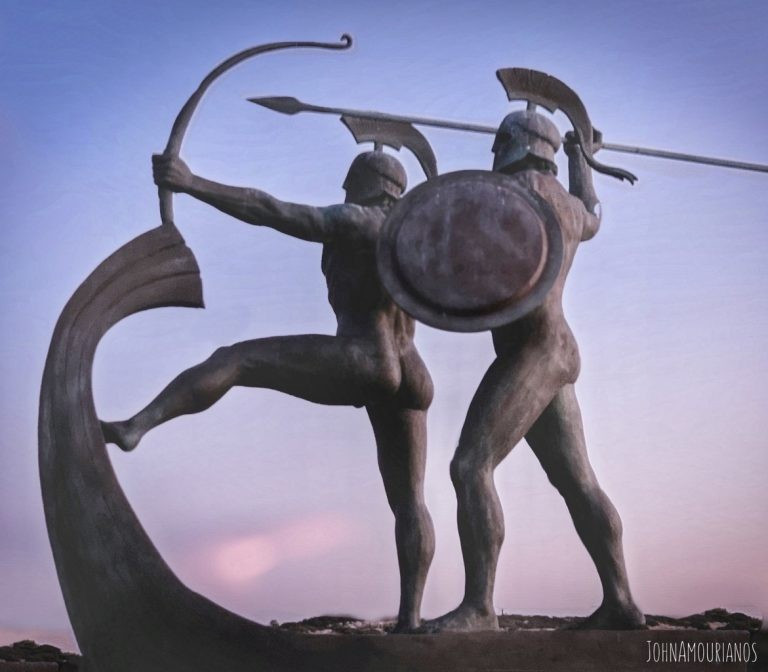Radio Amateurs members of the Salamis island DX Radio Team will be active using special call sign SX480SNB from Salamina, Salamis Island, IOTA EU - 075, Greece.
They will operate on HF Bands.
QSL via LOTW.
DXCC Country - Greece, SV.
Information from their QRZ page:
Location
Being Attica's closest island and the largest in the Saronic Gulf and EU-075 IOTA Group, with an extent of 93,5 sq. km, and a coastline of about 100 km, Salamina hosts a population of 39.283 inhabitants (2011 census), the vast majority of whom in the city of Salamina (Koulouri). Due to the island’s geographical location and historical circumstances, its course in time was usually common or intertwined with that of Athens.
Salamina’s history in 3 minutes
The earliest human evidence in Salamina dates back to the Late Neolithic period, around the third quarter of the 6th millennium BC. The most important mythological figure of the island is king Ajax (Aias), who participated in the Trojan War.
Plenty of settlement and burial remains from the Late Bronze Age (ca. 1600-1100 BC) are scattered in several locations, such as the Mycenaean settlement in Kanakia, probably the seat of the island's kingdom.
Around the middle of the 6th century BC, while in the Archaic era, Salamina was annexed to Athens, after the conflict with Megara. For the next six centuries, the urban center was located in Ampelakia bay, where today one may find ruins of buildings, fortifications and port
facilities.
During the Persian invasion (480-479 BC), Salamina became a refuge for the civilian population of Attica, seat of the Athenian Republic and base of the Greek fleet. At the end of September 480 BC, the legendary all-day naval battle -considered to be the decisive conflict that put an end to the Persian expansion, thus safeguarding democracy and Western civilization as we know it- took place in the straits between Salamina and the Attica coast.
The Classical era (479-323 BC) was a period of prosperity for the island. Among the architectural remains of the time, one may discern the recently restored circular burial monument in Kolones, dating back to the 4th century BC.
In the Hellenistic period (323-30 BC), the island was conquered by Macedonians and pirates.
There are indications that the island was looted and destroyed by the Roman general Sulla in 86 BC. Under the Roman rule, the few inhabitants that were left behind, moved to settlements around today's city and in Aiantio.
One of the most famous sights associated with ancient Salamina is the so-called “Euripides cave”. It is located near Peristeria, in the southern part of the island. Numerous finds, proving that the cave was used from the end of the 6th millennium BC until the Middle Ages, are exhibited in the Archaeological Museum of Salamina. Cross-examination of ancient literary testimonies, led to the conclusion that this is probably the place where the great tragic poet of the 5th century BC, Euripides, retired to write his works.

They will operate on HF Bands.
QSL via LOTW.
DXCC Country - Greece, SV.
Information from their QRZ page:
Location
Being Attica's closest island and the largest in the Saronic Gulf and EU-075 IOTA Group, with an extent of 93,5 sq. km, and a coastline of about 100 km, Salamina hosts a population of 39.283 inhabitants (2011 census), the vast majority of whom in the city of Salamina (Koulouri). Due to the island’s geographical location and historical circumstances, its course in time was usually common or intertwined with that of Athens.
Salamina’s history in 3 minutes
The earliest human evidence in Salamina dates back to the Late Neolithic period, around the third quarter of the 6th millennium BC. The most important mythological figure of the island is king Ajax (Aias), who participated in the Trojan War.
Plenty of settlement and burial remains from the Late Bronze Age (ca. 1600-1100 BC) are scattered in several locations, such as the Mycenaean settlement in Kanakia, probably the seat of the island's kingdom.
Around the middle of the 6th century BC, while in the Archaic era, Salamina was annexed to Athens, after the conflict with Megara. For the next six centuries, the urban center was located in Ampelakia bay, where today one may find ruins of buildings, fortifications and port
facilities.
During the Persian invasion (480-479 BC), Salamina became a refuge for the civilian population of Attica, seat of the Athenian Republic and base of the Greek fleet. At the end of September 480 BC, the legendary all-day naval battle -considered to be the decisive conflict that put an end to the Persian expansion, thus safeguarding democracy and Western civilization as we know it- took place in the straits between Salamina and the Attica coast.
The Classical era (479-323 BC) was a period of prosperity for the island. Among the architectural remains of the time, one may discern the recently restored circular burial monument in Kolones, dating back to the 4th century BC.
In the Hellenistic period (323-30 BC), the island was conquered by Macedonians and pirates.
There are indications that the island was looted and destroyed by the Roman general Sulla in 86 BC. Under the Roman rule, the few inhabitants that were left behind, moved to settlements around today's city and in Aiantio.
One of the most famous sights associated with ancient Salamina is the so-called “Euripides cave”. It is located near Peristeria, in the southern part of the island. Numerous finds, proving that the cave was used from the end of the 6th millennium BC until the Middle Ages, are exhibited in the Archaeological Museum of Salamina. Cross-examination of ancient literary testimonies, led to the conclusion that this is probably the place where the great tragic poet of the 5th century BC, Euripides, retired to write his works.

